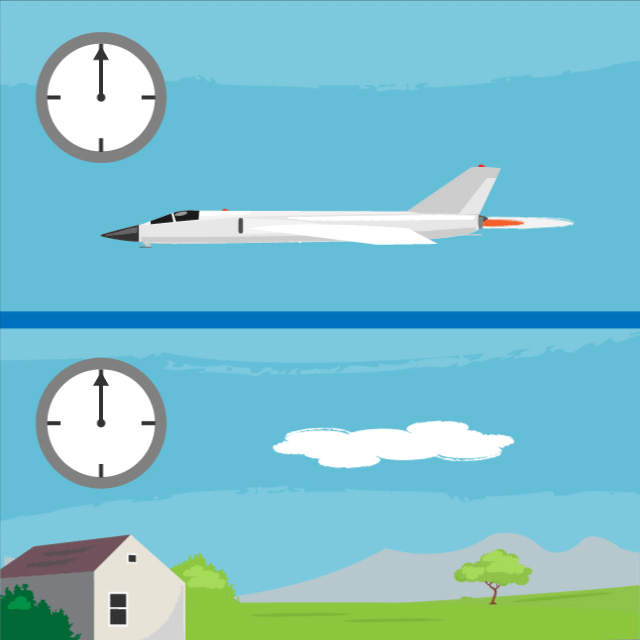Is Time Travel Possible? Let’s explore the Science and Fiction of Temporal Displacement. Although humans can’t hop into a time machine and go back in time, we do know that clocks on airplanes and satellites travel at a different speed than those on Earth.
The concept of time travel has long captured the imaginations of scientists, science fiction writers, and the general public alike. The ability to transcend the linear flow of time and venture into the past or future has been a recurring theme in literature, film, and popular culture. But is time travel truly possible, or is it merely the stuff of fantasy?
Unraveling the Mysteries of Time Travel
We all travel in time! We travel one year in time between birthdays, for example. And we are all traveling in time at approximately the same speed: 1 second per second.

We typically experience time at one second per second. Credit: NASA/JPL-Caltech
NASA’s space telescopes also give us a way to look back in time. Telescopes help us see stars and galaxies that are very far away. It takes a long time for the light from faraway galaxies to reach us. So, when we look into the sky with a telescope, we are seeing what those stars and galaxies looked like a very long time ago.
“However, when we think of the phrase ‘time travel,’ we are usually considering the concept of traveling faster than 1 second per second. This type of time travel seems like something only seen in movies or science fiction books. Could it be real? According to science, the answer is yes!”

This image from the Hubble Space Telescope shows galaxies that are very far away as they existed a very long time ago. Credit: NASA, ESA and R. Thompson (Univ. Arizona)
How do we know that time travel is possible?
Over 100 years ago, the renowned scientist Albert Einstein introduced the concept of relativity, which explains the interconnectedness of time and space. According to this theory, nothing can exceed the speed of light, which is 186,000 miles per second, in our universe.
The Science Behind Time Travel
According to Einstein’s theory of special relativity, time is not an absolute, but rather a relative concept that is influenced by factors such as velocity and gravity.
One of the key implications of special relativity is the concept of time dilation. This suggests that time can slow down or speed up depending on an individual’s frame of reference. Essentially, someone moving at a high speed or in a strong gravitational field would experience time differently than someone in a stationary frame of reference.
Expanding on this concept, some scientists have suggested the possibility of utilizing wormholes or exotic forms of matter to construct “time machines” that might enable time travel. Despite being mostly theoretical and encountering substantial technological and practical obstacles, these ideas have prompted continual discussions and research in the realm of time travel.

Einstein’s theory of relativity says that space and time are linked together. Credit: NASA/JPL-Caltech
An Experiment on Time Travel
What does this mean for time travel? Well, according to this theory, the faster you travel, the slower you experience time. Scientists have done some experiments to show that this is true.
For instance, an experiment compared two clocks set to the same time. One remained on Earth, while the other was placed on an airplane flying in the same direction as Earth’s rotation.
After the airplane flew around the world, scientists compared the two clocks. The clock on the fast-moving airplane was slightly behind the clock on the ground. So, the clock on the airplane was traveling slightly slower in time than 1 second per second.

Credit: NASA/JPL-Caltech
Can we use time travel in everyday life?
We can’t use a time machine to travel hundreds of years into the past or future. That kind of time travel only happens in books and movies. But the math of time travel does affect the things we use every day.
For example, we use GPS satellites to help us figure out how to get to new places. (Check out our video about how GPS satellites work.) NASA scientists also use a high-accuracy version of GPS to keep track of where satellites are in space. But did you know that GPS relies on time-travel calculations to help you get around town?
GPS satellites orbit around Earth very quickly at about 8,700 miles (14,000 kilometers) per hour. This slows down GPS satellite clocks by a small fraction of a second (similar to the airplane example above).

GPS satellites orbit around Earth at about 8,700 miles (14,000 kilometers) per hour. Credit: GPS.gov
However, the satellites orbit Earth at a distance of about 12,550 miles (20,200 km) above the surface. This causes GPS satellite clocks to run slightly faster by a larger fraction of a second.
Einstein’s theory also states that gravity curves space and time, leading to a slowdown in the passage of time. At higher altitudes where satellites orbit, Earth’s gravity is considerably weaker. As a result, the clocks on GPS satellites run faster than those on the ground.
The combined result is that the clocks on GPS satellites experience time at a rate slightly faster than 1 second per second. Luckily, scientists can use math to correct these differences in time.

Credit: NASA/JPL-Caltech
If scientists didn’t correct the GPS clocks, there would be big problems. GPS satellites wouldn’t be able to correctly calculate their position or yours. The errors would add up to a few miles each day, which is a big deal. GPS maps might think your home is nowhere near where it actually is!
The Challenges of Time Travel
Despite the tantalizing prospect of time travel, there are numerous obstacles that must be overcome before it can become a reality. One of the primary challenges is the issue of causality, which suggests that altering the past could have unpredictable and potentially catastrophic consequences on the present and future.
Additionally, the energy requirements for creating a stable, traversable wormhole or other time-bending mechanisms are believed to be far beyond our current technological capabilities. The amount of exotic matter or energy needed to manipulate the fabric of spacetime is simply staggering, and may be physically impossible to obtain.
The Role of Science Fiction in Exploring Time Travel
While the scientific community continues to grapple with the challenges of time travel, the realm of science fiction has long been a playground for exploring the concept. From H.G. Wells’ “The Time Machine” to the time-traveling adventures of the “Back to the Future” franchise, fiction has allowed us to imagine the possibilities and consequences of altering the past or glimpsing into the future.
These fictional narratives have not only captivated audiences but have also inspired scientific research and speculation. In some cases, the creative ideas of science fiction writers have even helped to inform and shape the direction of real-world scientific inquiry.
The Enduring Allure of Time Travel
While the prospect of time travel remains firmly within the realm of science fiction for the foreseeable future, the ongoing scientific research and technological advancements in fields such as quantum physics, cosmology, and computer science suggest that the impossible may one day become possible.
As we continue to unravel the mysteries of the universe and push the boundaries of our understanding, the dream of transcending the limits of time may inch closer to reality. Until then, the allure of time travel will continue to captivate our imaginations, inspiring us to explore the boundaries of what is possible and to ponder the profound implications of such a profound capability.
In Summary:
Yes, time travel is a real phenomenon. However, it’s not exactly like what we see in the movies. Under specific conditions, it is possible to perceive time passing at a rate different than 1 second per second. It’s important to understand this real-world concept of time travel for significant reasons.



